People don’t usually buy a product or service from a business immediately after the first interaction. Instead, they go through what marketers call a “marketing funnel”. Each stage of the marketing funnel represents the customer’s journey from learning about your brand to becoming a customer. In plain terms, it’s how someone learns about your business, gathers information, and decides to buy or not.
Developing a marketing funnel helps you understand your customers and build a marketing strategy that speaks to them. No matter how your business makes money—selling coaching services, online courses, digital downloads, physical products, or something else—you can leverage marketing funnels.
We’ll show you everything about marketing funnels, including how to use them to grow your online business.
What is a marketing funnel?
Put simply, a marketing funnel is a framework businesses use to turn leads into customers. For example, people may discover your business on TikTok, but they don’t buy from you right away. They’re aware of your business, but how do you get them to take action? One of the first steps is to build a marketing funnel.
With a marketing funnel, you identify all the touchpoints that you have with potential customers. Then, map them back to the marketing funnel stages. For each stage, you’ll have slightly different marketing messages and tactics that engage potential customers and eventually convince them to buy.
We’ll dive into each stage, show you how it fits into your marketing, and provide examples you can use for your business.
Stages of the marketing funnel
You’ll find many versions of the marketing funnel online. Most marketing funnels include three to five stages. There’s no right or wrong marketing funnel to use, as long as it reflects your customer journey. The most basic marketing funnels have three stages—awareness, consideration, and conversion.
Some also call these marketing funnel stages the top, middle, and bottom of the funnel.
- Top of the funnel (ToFu) – Awareness
- Middle of the funnel (MoFu) – Consideration
- Bottom of the funnel (BoFu) – Conversion

Awareness (ToFU)
The awareness stage or top of the funnel is where people first learn about your product or service. They may be aware of a pain point or problem and are in the early stages of researching possible solutions.
Top of funnel marketing typically focuses on brand awareness. People at the top of your funnel are not quite ready to buy from you—they’re just getting to know you.
You want to get in front of your audience so that when they’re ready to buy later in the funnel, they’ll remember you. To do this, create marketing that educates and entertains them, so you’ll grab their attention.
Examples of awareness or top of the funnel marketing include:
- Informational, how-to blogs
- Social media posts and ads
- Sponsored content and influencers
- Podcasts
- Press mentions and features
Some overlook the importance of awareness in the marketing funnel, but you shouldn’t. Often, it’s not the best product or service that wins, but the one that people are aware of at the time.
Consideration (MoFU)
In the consideration stage or middle of the funnel, people have narrowed down a few choices, but haven’t decided which to buy yet. They might be considering which of your products to buy or deciding between you or your competitors.
In the middle of the funnel, you want to educate potential customers on which solution is best for them. The idea is that you guide them toward making a buying decision.
You also want to provide your potential customers or prospects with enough value that they give you their contact information. To capture their emails and other information, offer high-quality lead magnets. Then, nurture your relationship with them on other channels like email.
Obviously, you don’t want to spam them with sales pitches. But, you should re-engage them with messages, freebies, and other offerings that are personalized to their interests and needs.
Examples of consideration or middle of the funnel marketing include:
- Case studies
- Buying guides
- Original research
- Webinars
- Comparison content
- Testimonials and reviews
- Product demos
- Quizzes and tests
- Free courses and templates
{{threesteps-component="/blog-shortcodes/blog-popup"}}
Conversion (BoFU)
In the conversion stage or bottom of the funnel, you’ve built trust with your leads. Some marketers also call this the decision stage. People have the intent to make a purchase, so entice them to convert.
Your job at the bottom of the funnel is to present your product in a compelling way that inspires leads to take action. Leads should feel like what you’re offering is a solution to their problem.
In the conversion stage, you also need to make it as easy as possible for them to take the desired action. At a minimum, answer these questions to improve your chances of converting visitors:
- Are there any parts of your website or experience that cause friction, or slow them down?
- How can you simplify the checkout process? Can you add one-click payments?
- Do your landing pages include all the information for visitors to make a buying decision?
- Are landing pages packaged in a scannable, well-designed format?
- Do they include one main call-to-action?
Conversion examples include:
- Signing up for a free trial
- Scheduling a consultation
- Making a first purchase
- Using a new customer promo code
- Signing up for a subscription
- Becoming a repeat customer
Although some marketing funnels stop at these three stages, there are others. More recently, businesses have started including two other stages in their funnels—loyalty and advocacy.
Loyalty
During the loyalty stage, you focus on how to keep customers so engaged that they come back and buy from you repeatedly. Many brands have customer rewards or loyalty programs that offer perks to encourage certain actions.
For example, Dunkin’ uses a points system, where users get points for each purchase. Then, they can use those points for free products.

Online businesses can leverage loyalty too. For instance, after students complete one of your courses, offer them a special deal to buy another product. You could give them a discount on another course, a bundle of coaching sessions, or something else.
But, timing is everything. Ideally, share the offer a few days after they’ve completed the course, so you’re still on their mind. You can even send a congratulations email and include links to related products and an exclusive discount.
Advocacy
The advocacy stage is about turning your best customers into your biggest advocates. When you leverage advocacy in your marketing funnel, you can significantly grow your business.
Customers that love their experience will recommend it to their network through referrals and word-of-mouth. The best part is that it drives sales and costs you little to nothing. However, you can ask for referrals and encourage more customers to share your business with an affiliate program.
If you use Teachable to sell your products, it’s easy to set up an affiliate program. With a paid plan, Teachable tracks all affiliate sales and will even automatically pay your affiliates’ commission.
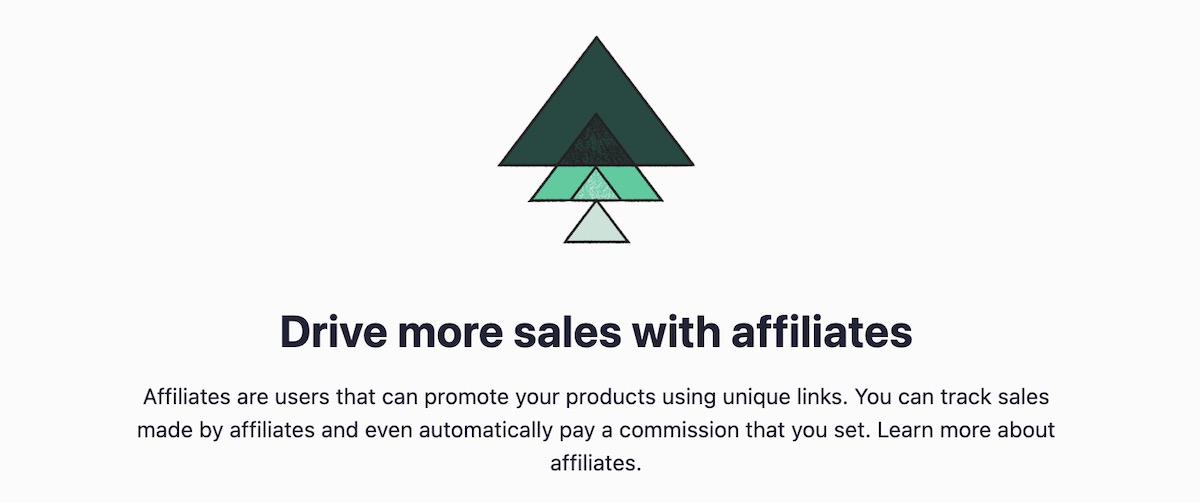
{{salespage-component="/blog-shortcodes/blog-popup"}}
How the marketing funnel works
Now that you understand each stage of the marketing funnel, let’s look at how they all work together to drive sales in real-life.
In simple terms, to use marketing funnels, businesses list all their products and services. Then, identify all the ways that their target audiences may discover them.
For example, let’s say someone wants to learn American Sign Language (ASL) online. Where do they begin? They start by becoming aware they want to learn and start exploring options.
Some start their customer journey with a Google search for terms like:
- how to learn sign language
- online asl lessons
- learn asl online
- asl courses online
If you’re a course creator teaching ASL online, you’ll want to appear in those search results. Now, you know that search engine optimization (SEO) should be part of your strategy. This way, the people looking for what you sell become aware of your course.
However, what if they don’t convert immediately? Then, you’ll want to re-engage them, which you can do through retargeting ads, which they’ll see after visiting your website.
Through customer feedback, you discover that your target audience compares your course to two or three others before making a decision. In this case, they’re in the consideration stage. You can create comparison content, which usually compares your brand versus your competitor.
Gusto’s comparison pages are a great example you can use as inspiration.

Lastly, you offer the first ASL lesson for free and find that people are more likely to buy your entire course after.
For most businesses, there are more moving parts and tactics than the ones listed above. However, to get started, keep it simple. Instead of trying everything, focus on the strategies that make the most sense for your audience and your marketing funnel.
Build your own marketing funnel template
To build your funnel, here are a few simple steps to start:
- Map your customer journey and learn about your target audiences – Outline all the touch points where customers may find you and convert.
- Pick one or two tactics for each funnel stage to start – Prioritize a few channels and tactics for each stage of the funnel. You’ll get better results by perfectly executing on a couple tactics rather than poorly executing many.
- Create content for each tactic – Make a list of the content and assets you need for each tactic and start creating.
- Connect the funnel – Each tactic should work together to move people through your marketing funnel stages, so you need to connect each of them. For inspiration, look at the marketing examples from Teachable creators below.
Marketing funnel examples
To be successful, you need to create tactics that check off every stage of the marketing funnel and work together. When the marketing funnel works together, you shorten the time between when someone becomes aware of a problem and your product, and when they buy.
Let’s dive into how Teachable creators use marketing funnels to sell more courses and other digital products.
1. Melyssa Griffin
Melyssa Griffin teaches courses for content creators and entrepreneurs. Her email list-building course is popular because she hits every part of the marketing funnel to drive sales to it.
Top of funnel awareness examples
At the top of the funnel, she creates blog content around email marketing and entrepreneur topics.

She also repurposes blog content for Pinterest and other social media to reach audiences on those platforms as well. Note how she doesn’t just share the blog link. Instead, each Pinterest post has a custom cover image and design that matches Pinterest.
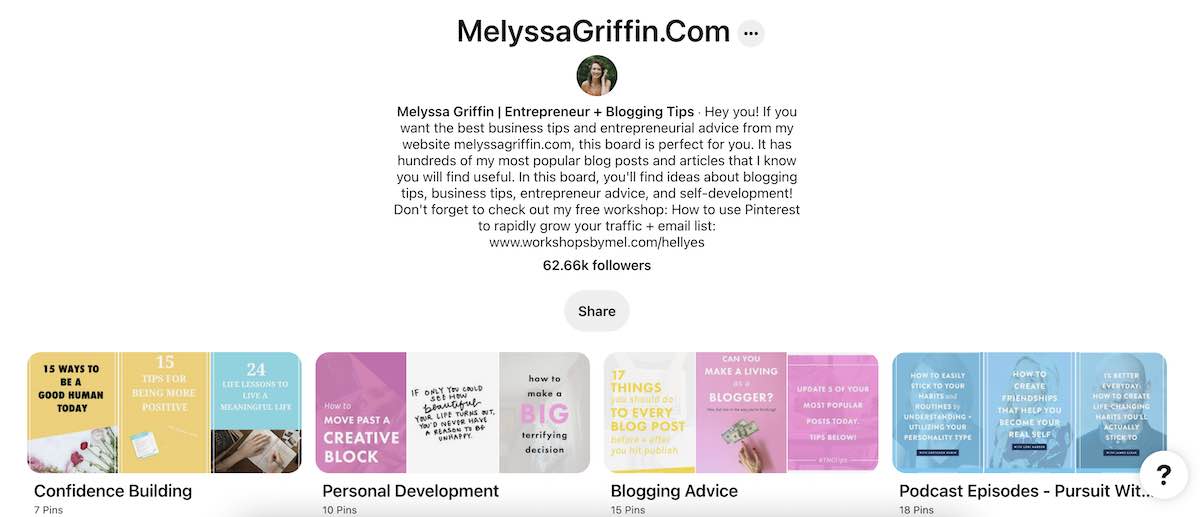
{{trial-component="/blog-shortcodes/blog-cta"}}
Middle of funnel consideration examples
Next, Melyssa moves leads through the funnel with quizzes, customer success stories, and free workshops.
Customer success stories are neatly organized for each course that she offers. Here’s an example from the email course.
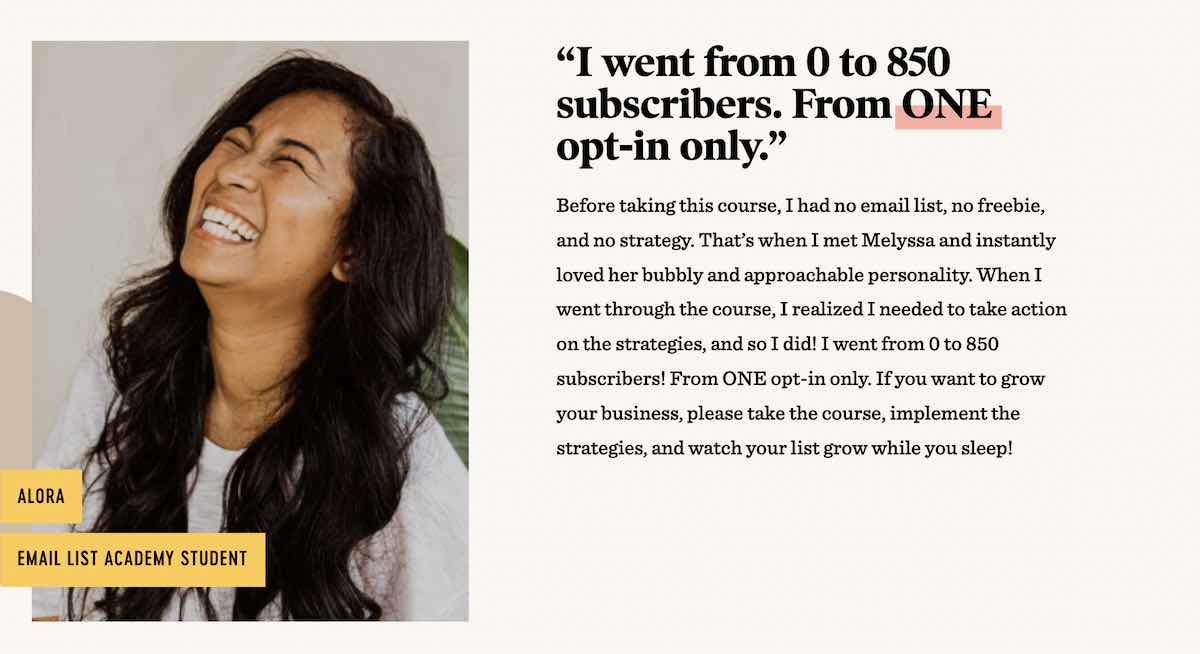
She also offers a free workshop as a lead magnet for the course.
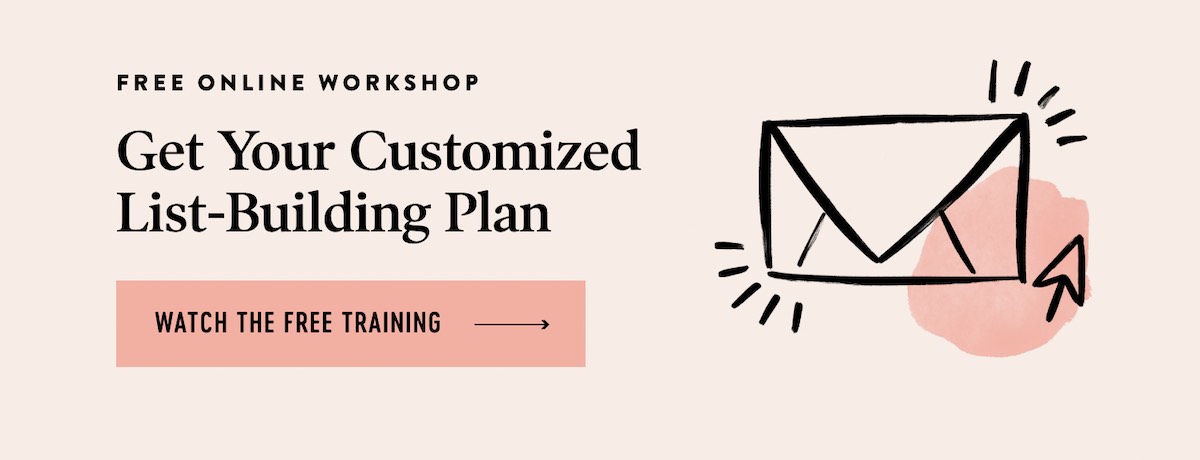
Bottom of the funnel conversion examples
The landing pages for her courses are fine-tuned to make it easy for people to convert. They include a clear call-to-action and all the information you need to decide. The above-the-fold section clearly states what the course is and the benefits of taking it.

2. Teela Cunningham
The creator of Every-Tuesday, Teela Cunningham teaches digital art and lettering. Like Melyssa, when she markets her online business, she checks off every stage of the marketing funnel.
At the top, she’s building awareness with several tactics, from SEO to social media. For example, she has a Procreate for beginners course. SEO is one tactic she’s using to raise awareness.

When you search ‘Procreate for beginners course’, Teela appears in two types of search results—video and text.
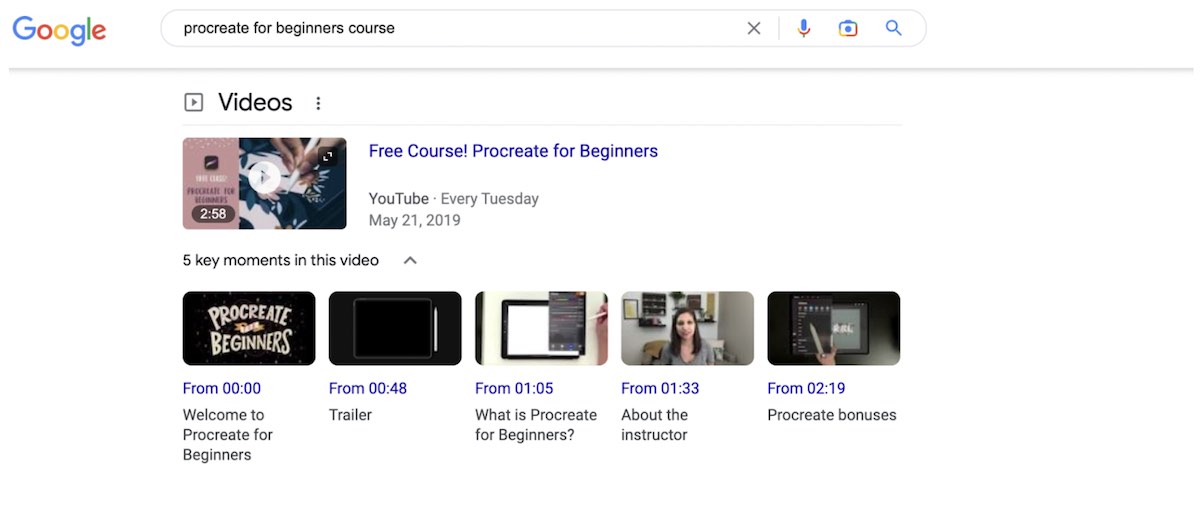

She also ranks for ‘Procreate for beginners’, which close to 600 people search for each month.

In addition to SEO, Teela has built up her audiences on Instagram, Pinterest, and YouTube by sharing tutorials and design resources.
Again, content from her site is re-purposed and designed to fit the channel. On Pinterest, posts have custom designs but still match her personal brand.

On Instagram, Teela has over 100,000 followers and shares Reels of her design and lettering creations.
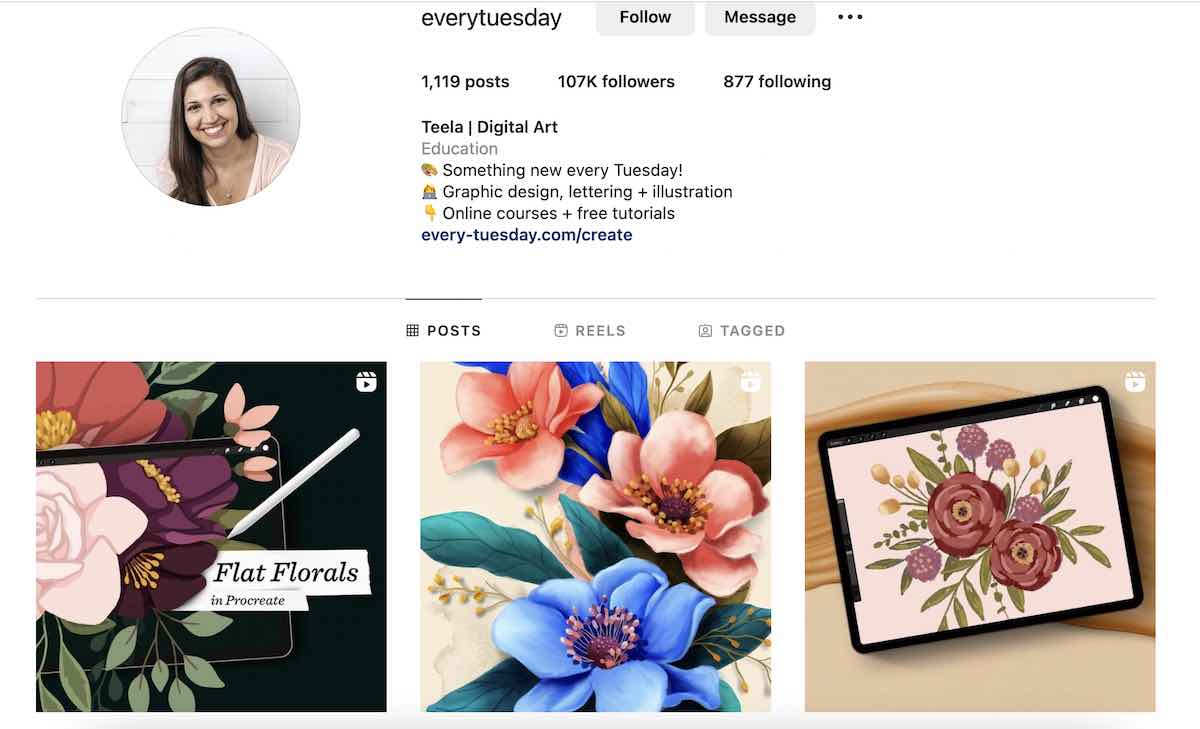
Lastly, YouTube is one of her most popular top of funnel marketing channels, with over 350,000 subscribers. She posts longer tutorials that generate interest for her online courses and digital products.
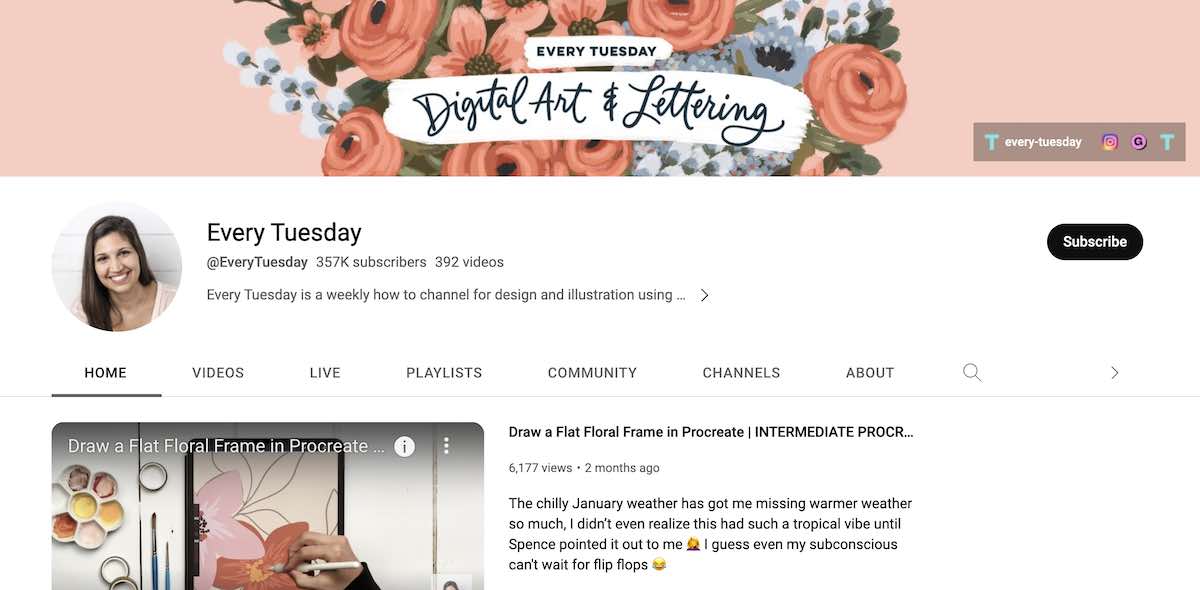
Next, she generates leads in the middle of the funnel through her community and email list, the Tuesday Tribe. She entices visitors to sign up by offering over 50 free design files, access to her resource library, and exclusive discounts.
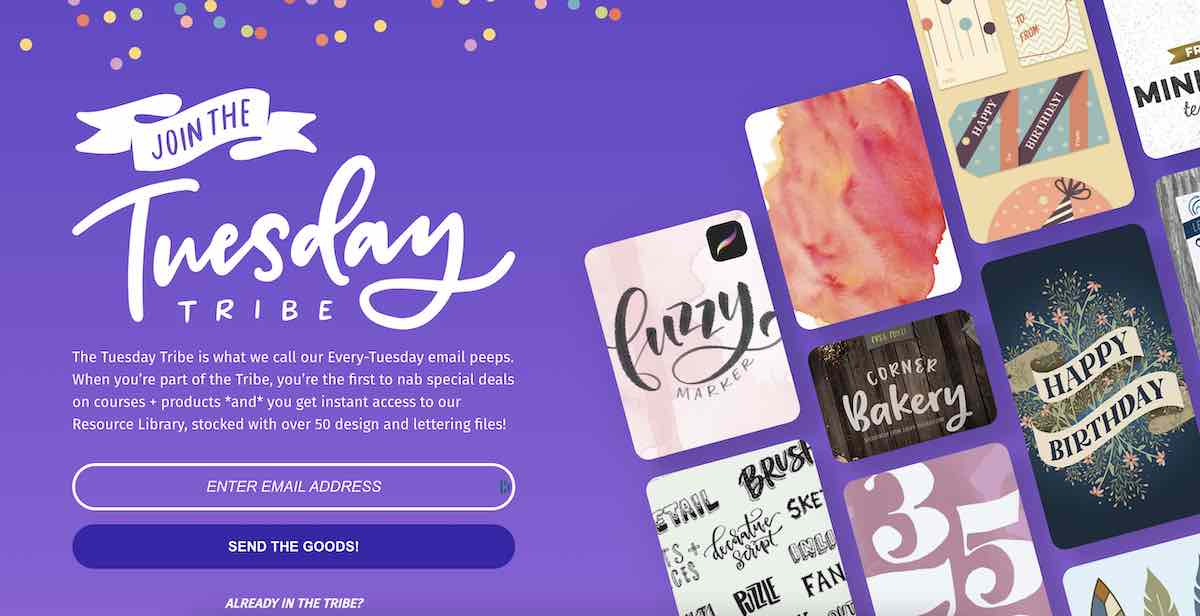
Lastly, she offers free and paid courses. Often, her free tutorials lead to sales of her digital products, which are files she uses during the course.
As you can see from both examples, every piece of content and marketing maps back to the stages of the funnel.
Marketing funnel metrics: How to measure success
Think of marketing tactics as a buffet menu—you don’t eat every item off the buffet. Although you could, we don’t advise it. You don’t want to put more on your plate than you can handle. Instead, choose the goals, content, and tactics that best fit your business.
You’ll also need to measure what is working and what isn’t to prioritize where you spend your time and money. Let’s look at metrics for each stage of the funnel and how to use them.
Top of the funnel metrics
Goal: Attract as many targeted visitors as possible with relevant content. (You can track many of these metrics for free using Google Analytics. Log in to your Google Analytics account and go to Acquisition > All Traffic > Channels.)
Middle of the funnel metrics
Goal: Convert more visitors into leads and nurture the relationship.
Bottom of the funnel metrics
Goal: Get your leads to purchase (or repurchase) your product. If you use Teachable, you can find most of these metrics inside your dashboard.

Teachable’s recommended marketing funnel for online courses

To create this marketing funnel, you might follow these steps:
- Write blog posts that are relevant to your course topic.
- Share your blog posts on social media.
- Create a simple lead magnet (worksheet, checklist, or ebook) or a mini course to capture leads.
- Add a call to action to your blog post for readers to sign up for a lead magnet or course.
- Invite new leads to purchase your course on the thank you page after they become leads or an email after signing up.
- Offer a product upsell to your customers immediately after their first purchase.
- Use email marketing to nurture your leads and customers and generate more sales.
Your marketing funnel doesn’t have to be complicated. Follow these steps and share your experience.
Join more than 150,000 creators who use Teachable to make a real impact and earn a real income.


